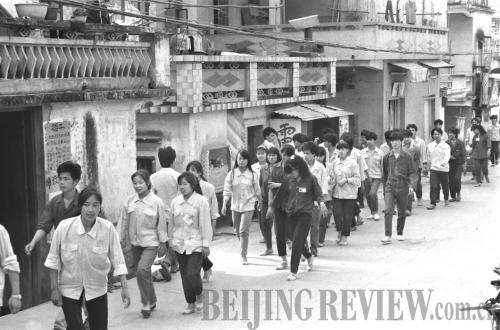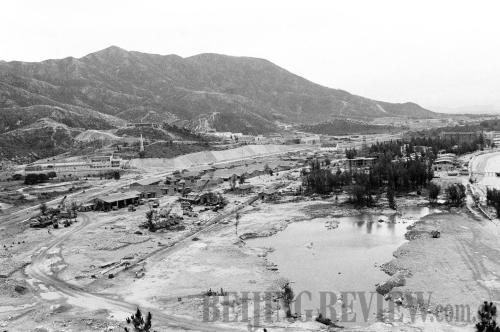|
 |
|
DREAMING OF CITIES: The first generation of China's migrant workers who left their homes in the countryside and found jobs in manufacturing factories in Shenzhen in 1992 (XINHUA) |
A technological innovation system should be built to combine enterprises, market, production and research to enhance innovative capability of core technologies, so as to drive economic development with innovation, Hu said.
Young and booming
When visiting Tencent, one of China's major Internet companies, during his three-day tour of Shenzhen, Hu encouraged the company's 12,000 staff members to do innovation and contribute to the nation's Internet industry. The staff have an average age of only 27 years and 85 percent have college degrees.
 |
|
DEVELOPING FROM NOTHING: The construction of Shekou Industrial Zone in Shenzhen in 1981 (XINHUA) |
Shenzhen has made full use of its characteristics as a young and booming city, as well as a city of immigrants, to widely absorb talent from across the country and the world to serve its modernization, said Qin Xiaoying, a researcher at the China Foundation for International and Strategic Studies.
Hu also visited the Dayawan Nuclear Power Station, known as the "cradle" of the country's nuclear power industry.
The Dayawan and Ling'ao nuclear power stations in the area deliver more than 95 million kwh of electricity to Guangdong and Hong Kong each day.
At Yumin (fishermen) Village Community in downtown Shenzhen, Hu examined residents' living conditions.
As the name indicates, it was a fishing village 30 years ago. But it has now evolved into a modern urban community, with its villagers now urbanites.
In 1984, the late Chinese leader Deng Xiaoping, who first proposed building Shenzhen into a SEZ in the late 1970s, visited the village.
"The community's great change epitomizes the development of the Shenzhen SEZ and proves that the reform and opening-up policy is a must for national prosperity," Hu said.
| 